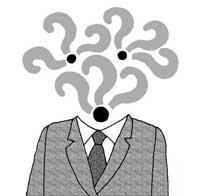For many, Blockchain technology is some kind of new disruptive idea taking the world by storm. While there are those who love the idea, there are many others who are still on the fence about it.
With the media’s focus heightened on Blockchain over the last few years, it’s quite understandable why many people think that way. It’s also this sentiment that is one of the prevailing forces behind the market’s incertitude.
However, since you’re reading this article, we could only but assume that you’re interested in finding out more about Blockchain for yourself, are an individual or company leader seeking product information, or merely want to know more about us as leaders in the Blockchain space.
Since we here at Somish Blockchain Labs regularly receive a number of specific questions from both individuals and companies alike, I felt the desire to personally sit down and answer a few of the most prevalent ones.

First Things First: Understanding the History
We believe that to truly understand something, especially when it comes to technological and scientific matters, starting with their history is a crucial aspect of the learning process, as well as to accept their validity.
While the mainstream media habitually portrays Blockchain technology as some kind of “snake oil” or an untried, risky technology, such notions are anything but grounded in reality.

The truth of the matter is, it has been nearly two decades since Stuart Haber (who graduated from Harvard with an Auditeur libre in mathematics) and W. Scott Stornetta (who holds a Ph.D. in Physics from Stanford University) began working on what we now know as Blockchain.
For this reason, Haber and Stornetta are considered to be the original founding fathers of Blockchain technology.
They both shared a vision of creating a system comprised of a cryptographically secured chain of blocks (hence the name) so that document timestamps couldn’t be altered or forged, subsequently eliminating the need for a middle person (or a “trusted party”).
Around a year later, Haber and Stornetta teamed up with David Allen Bayer, also a Harvard Graduate with a Ph.D. in mathematics, and incorporated Hash Trees (also known as Merkle Trees) to their design.
Hash Trees greatly improved the program’s efficiency since it allowed more than a single document certificate to be stored in a single block.
The Mysterious Satoshi Nakamoto
For lovers of Blockchain technology, the lore behind Satoshi Nakamoto is what makes its history so fascinating and intriguing. At the center of this story is an individual or organization calling themselves “Satoshi Nakamoto.”
More mysterious than a phantom, speculations still swirl about as to who Satoshi Nakamoto is or if it’s rather a “they.”

Either way, Satoshi Nakamoto published a white paper in October 2008 entitled Bitcoin: A Peer-to-Peer Electronic Cash System (PDF) explaining the digital currency and its intended purpose: to eliminate the need of third-party financial institutions in online transactions.
Most Blockchain leaders would agree that it was Bitcoin that ultimately brought about increased interest and investment in finding other ways Blockchain could be used to achieve similar benefits outside digital currencies. So, why should you prioritize it? Below are at least three of the top reasons why.
1. Blockchain Can Be Incorporated In Countless Industries
Our team’s love for technology lies in the fact that it solves problems and furthers humanity’s wellbeing. There is always someone somewhere in the world laboring away to invent technological solutions to all sorts of issues.
When considering whether or not Blockchain can be used in your business, it’s important to understand that Satoshi Nakamoto’s fundamental ideology behind Blockchain was to create a “cryptographic proof instead of trust.”
This automated proof-of-work is nearly limitless in terms of applicability across countless industries. By contacting us at Somish Blockchain Labs, you will be able to envision how, where, and which Blockchain model is a perfect fit for your company’s needs. Below are but a few of use cases individuals and institutions from around the globe are utilizing Blockchain.
- Certificate verification
- Banking
- Hedge Funding
- Online identity and DNS
- Ride-sharing
- Insurance
- Health services
- Waste management
- Trucking
- Pharma
- Diamonds
- Online gambling
- Agriculture
- Air travel
- Foodservice
- Gaming
- Video streaming
- Public assistance
2. Most Companies are Perfect Candidates for Blockchain Technology
In order to answer this particular question, one must first realize what is lacking in traditional business networks and identify those networks that best define your scenario. The traditional business networks that should be replaced by Blockchain possess the following traits:
- There exists a need for achieving a single version of truth among multiple business stakeholders
- There exists a diminished trust among stakeholders
- Lack of transparency and traceability from the source to the final destination
- Lack of real-time provenance and visibility throughout the process chain
- Lack of efficiency
- There is wastage
- Lack of reliable tracking
- Processing times take several days or so
An excellent example of an area where Blockchain could be a vital solution to most of the above-mentioned traits lies in a report published by London-based Zencargo where it revealed that UK institutions waste over 100 million work hours annually to activities such as procuring and managing suppliers, by spending time on phone calls and emails to request and funnel data back and forth between their trade partners, the majority of which already exists on partner systems as well as freight-related administration.
This waste of work hours costs UK companies approximately £1.5 Billion! Cross-organizational workflow automation using blockchain technology aims to solve such problems that exist in businesses today. Please feel free to click here to learn more.
As I stated previously, the inherent nature of Blockchain technology resolves the need for employees in the chain to spend valuable time passing data back and forth, much of which already exists somewhere in each one of their networks.
And this is where your Return On Investment (ROI) becomes realized: by improving existing processes.
3. Blockchain Is an Ever-Evolving Technology
Since its birth, Blockchain technology has changed repeatedly to accommodate numerous needs. Some people have asked, “Will there ever be another technology that will eventually take the place of Blockchain?” We feel safe in saying, “No. Not in the foreseeable future.”
It’s safe to say that Blockchain technology is as monumental to computer science as the lightbulb or the Internet. It’s truly unfortunate that not enough people have learned about it and how it could very well reshape how the world does things.
It’s very hard to imagine that Blockchain will be replaced by any other technology any time soon but rather it will continue to evolve and become more powerful as time passes.
5 Principles of Choosing the Right Blockchain Platform
- Open is always better: Blockchain technology hopes to cultivate diverse communities full of open source contributors, organizations moving to spur change, precipitate the time it takes to mature while decreasing the overall costs.
- Permission over private: Regulatory and fiducial compliance is guaranteed through permissioned and trusted access. This should be the main principle of any enterprise blockchain.
- Governance is viewed as a team effort: Undue concentrations of influence are prevented by spreading the responsibility of validating transactions and running network nodes over at least three trust anchors in order to prevent unnecessary concentrations of influence.
- There should be a common standard: Enterprise blockchains must be built around a “common standard” that doesn’t allow vendors to become locked-in but rather promotes a healthy ecosystem of industry innovators.
- Privacy is critical: Data on a blockchain should always belong solely to the creator in order to secure individual and organizational information. APIs have the responsibility to grant the same permissions programmatically.
How Do You Choose a Good Vendor?
- Choose vendors who are specialists in blockchain and have delivered live production systems. If you would like to know about Somish’s Testimonials of Live Production Customers, please contact us now.
- Choose vendors who have contributed to the open-source blockchain community. Usually, checking GitHub’s repository for a vendor’s open-source contributions is the best way to gauge how well they are performing.
- Ask your vendor to suggest the implementation strategy.
What Should Be the Expectations of a PoC?
In the over-crowded Blockchain space, many vendors offer to assist buyers in justifying an investment in Blockchain technology. For instance, some Blockchain vendors simulate an assortment of problems, others provide penetration tests, or sponsor a list of tests and set of tools.
Whether a vendor chooses to call it proof-of-concept, proof-of-capability (PoC), or proof-of-value (PoV), the key concept is always about allowing consumers the chance at testing and evaluating the product.
Many vendors all throughout the tech industry attempt to oversell their product’s solutions and Blockchain is no different. This leads to a large number of enterprises struggling to set an achievable scope.
In order to avoid missing your expectations, it’s crucial to identify Key Result Areas (KRAs) such as flexibility, employee involvement, simplicity, as well as others particular to your business.
If you are working at a medium to a large corporation and looking to invest in Blockchain technology but don’t know how or where to start, you’ve come to the right place. Contact us today to learn more about Blockchain Proof of Concept Development, please feel free to contact us at +91-11-46681218 today!
Ish Goel established the ‘Blockchain Centre of Excellence’ at Somish in 2016. Through the Somish Group, he has worked with the Government, Real Estate, BFSI, Manufacturing, Retail, Agriculture and Logistics industry over the past one decade.
Ish is one of the key blockchain architects at Somish and has led delivery of multiple blockchain products using platforms like Ethereum and Hyperledger globally. Key product offerings include: DEF (Data Exchange Framework powered by blockchain, getdef.io), GovBlocks (Decision Making Protocol, govblocks.io) and Certy (Issue Certificates on Blockchain, certy.io)
